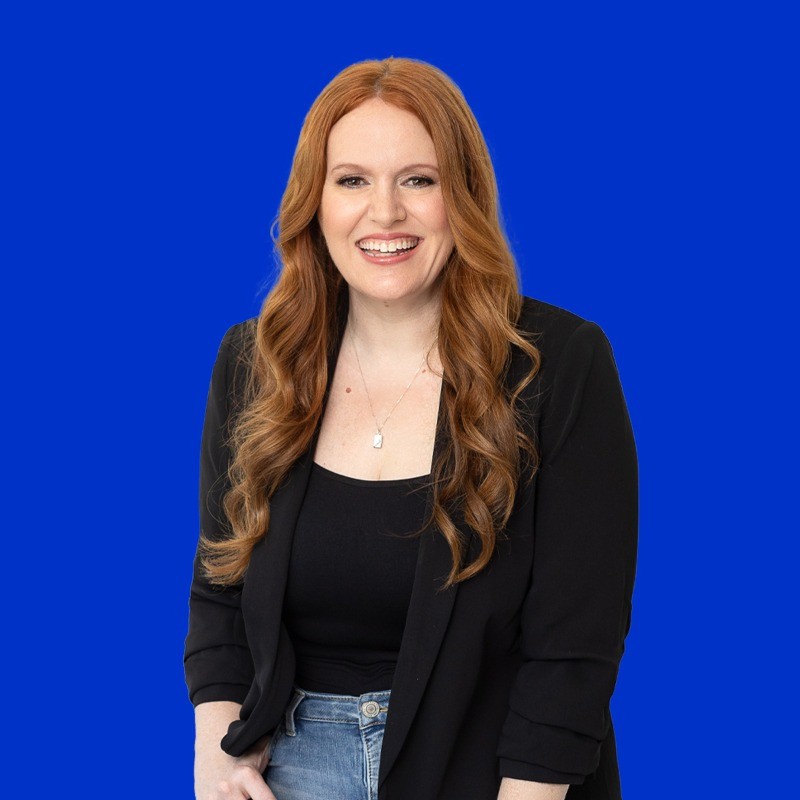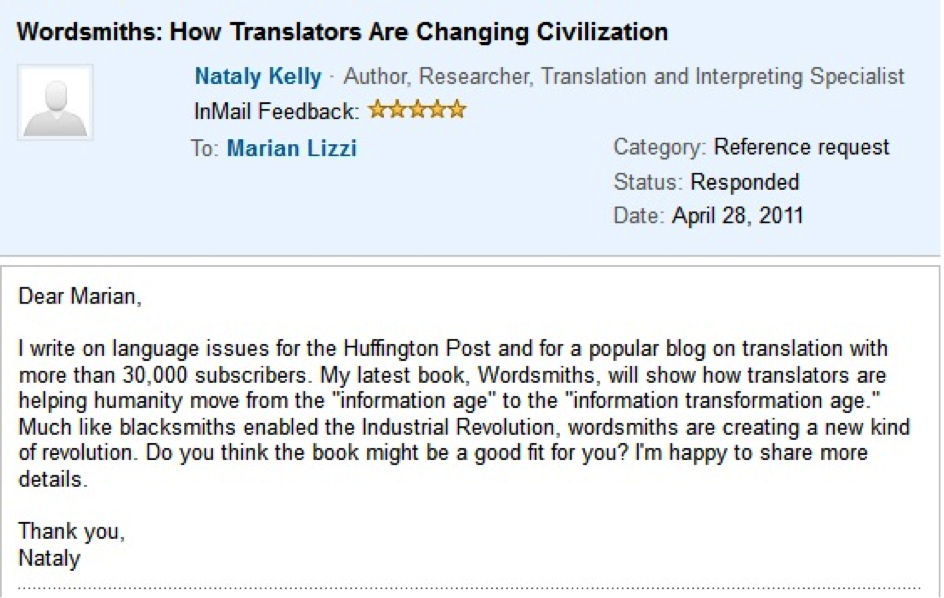The InMail That Landed Me a Book Deal
Ever since my book, Found in Translation, came out this past October, people have been asking me how I landed a major publisher. My response: I sent a pitch via LinkedIn.
For many years, I had been pitching my book concept to publishers. Like many authors, I believed in my idea. I worked with an agent, who pitched my proposal to all the major New York publishers using traditional methods to no avail. After years with no success, I terminated the agreement with my agent.
Then one night, it occurred to me – why not see if I had any book editors in my LinkedIn network? Indeed, I did! So, I sent them a short description of the book and my platform as an author. One of them, Marian Lizzi from Perigee, a Division of Penguin, replied to request more details. This exchange eventually led to success for both of us. I found a major publisher to bring the book to the world, and Perigee acquired a title that is already in its fourth printing since its release just three months ago.
Obviously, the content of the message mattered too. Here is a copy of the actual message I sent:
Marian Lizzi, the editor at Perigee, told me that my pitch was the first she had ever received via LinkedIn, and the only one to date: “I love finding book projects in unconventional ways. When I read your message, I could see that it was a serious request, not a frivolous one. I was impressed that you had taken the time to find me, and intrigued to hear more about the proposal.”
Here are a few other tips I can share with LinkedIn members who are looking to connect with someone who can convert their professional dreams into reality:
- Send a message via your LinkedIn network on top of other methods. I often use LinkedIn when I want to make sure I get through to someone. E-mails often go into Spam, and snail mail can get lost.
- Keep your profile updated and complete. People will often check your profile and use that information to determine if you are worthy of their time. Busy agents, editors, and even journalists have found my LinkedIn profile at the top of search results and that’s how they learned more about my platform as an author and areas of expertise.
- Remember the value of your network. I would have never found my editor at Perigee if I hadn’t spent many years building a network of other contacts through whom we were distantly connected. Every contact you make really counts, and you never know when they will pay off.
- Use your network when you travel. Every time I scheduled an event for the book tour, I checked my network to see which of my first-degree connections lived within a 60-mile radius by using the LinkedIn search tool. I then let each of those people know that I would be in their area, so that they could get a signed copy of the book if they wished.
- Don’t forget to pay it forward. All of us get so busy that we don’t take the time to comment on other people’s status updates, share links, congratulate people, and so on, but this is an essential part of cultivating your network. Whenever I am logged in to my account, I scan updates from my contacts – especially other authors – to look for opportunities to “spread the love.” So many people in my network have helped me spread the word about my book, that I feel that it’s only right to help them in similar ways. That kind of reciprocity never goes unnoticed. It’s part of a cycle of building and cultivating relationships, which are critical for every professional – both those who are already living their dream and those who hope to be!



